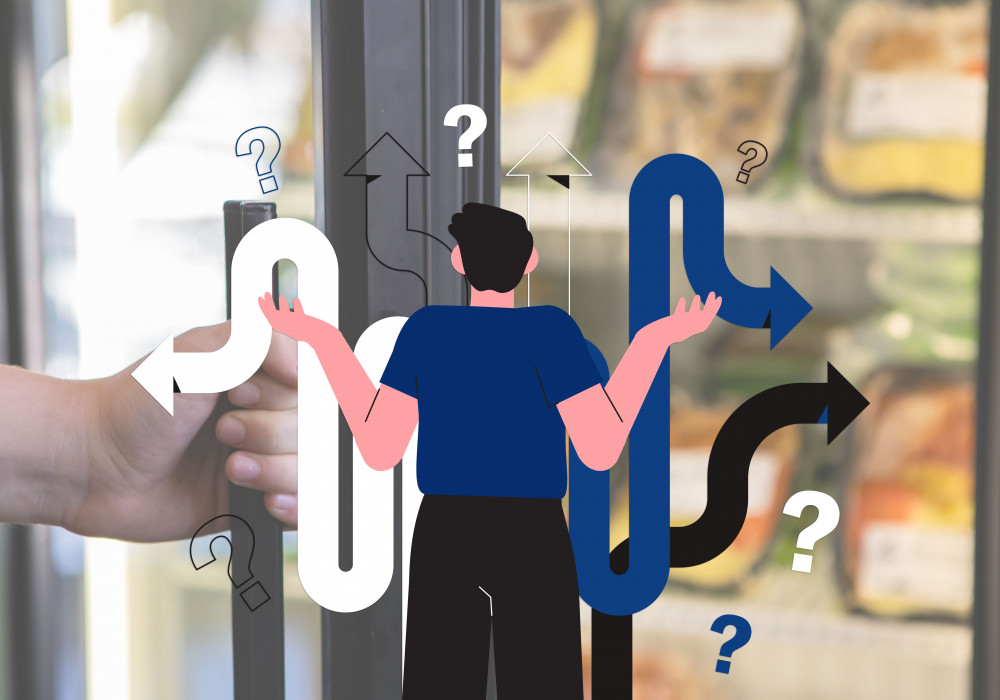
Commercial refrigerators are available in a wide variety of sizes, capacities and designs, which is beneficial because it means you can purchase the best unit suited for your restaurant’s layout and needs. If you’re looking to buy a refrigerated display counter for your business, you might encounter the terms ‘remote refrigeration’ and ‘integral refrigeration.’
People often wonder if it's better to use remote refrigeration or integral refrigeration. There’s no one-size-fits-all answer, however, since there are several factors to consider. These two types of refrigeration systems have been developed to provide efficient and suitable refrigeration solutions for various commercial spaces. Nevertheless, both have their strengths and weaknesses, depending on your exact requirements. There is a great deal of variation between them regarding design, location and how well they fit with your store.
This article discusses the differences between the two, examining the pros and cons of each to help you get the right one for your business.
Integral refrigeration is a popular choice for commercial cooling applications because it can be plugged in and operated immediately. Operating it does not require much technical knowledge. Essentially, integral fridges are self-contained units, meaning they have everything they need to run built into them. All elements of the refrigeration system, from the condenser to the evaporator, are built within the cabinet. It is easy to use, convenient and compact, making it suitable for various cooling applications.
Integral display cabinets offer less hassle to the consumer and less burden to the manufacturer, being easier to install and needing fewer service calls and little maintenance. As soon as it’s plugged in and running, an integral unit is ready to keep food items refrigerated. On the other hand, with a remote fridge, the cooling system must be appropriately configured. Otherwise, it can lead to a commercial refrigerator or freezer malfunctioning.
In a self-contained or integral refrigerator, you'll always find the evaporator on top. Meanwhile, condensers can be situated anywhere in the unit. The evaporator and condenser are joined by tubes, ensuring consistent storage temperatures by carrying coolant throughout the system.
· Installation is not costly and does not require any special skills or a technician
· Involves a simple maintenance process
· More convenient to use
· The condenser is built into the system, so there’s no need to run lines or maintain an external condensing system
· Buying the entire system only requires one purchase
· If they need to be moved, they can easily be relocated
· There is a lot of heat generated by self-contained units, thus causing the temperature in your kitchen to rise rapidly
· A small environment may not be able to accommodate the unit's size, and a proper ventilation space is required for this type of cooling system
· Your air conditioning will have to work overtime in your kitchen because of the hot air, which can impact your electricity bill significantly
· It’s typical for the evaporator and condenser on these systems to be extremely noisy, making them unfit to be located in an open layout or small kitchen since they can disturb customers
· A smaller amount of space is usually available for exhibiting products
· Running costs are typically higher in the long run
You might have noticed that remote units are more economical, but there is a reason for this. A remote fridge does not have a condenser in the way that a self-contained unit does; its condenser is not housed within the box.
In remote refrigerators, the evaporator is located inside. However, the compressor and condenser are located in a remote location. It is common for food service establishments to place condensers and compressors in a basement that is kept cool or on a roof.
The compressor and condenser, which give off the most heat, are separated from the central refrigeration unit, so they’re suitable for restaurants that experience heat issues. Places with low ceilings or poor ventilation can also benefit from installing remote display cabinets. Further, remote units are a good option for large grocery stores, delis, supermarkets or any business with multiple coolers. They’ll maintain a comfortable temperature in your interior and reduce condenser noise to avoid disturbing customers.
Remote units are usually quieter and more cost-effective to run than self-contained units. Installing them can be complex, however, and requires the expertise of a specialist.
· Hottest parts of the unit can be placed in the most ideal area, reducing the need for air conditioning
· Quiet environment
· Less heat build-up in the fridge since not all components are contained inside it
· Efficient operation
· More interior space is usually available
· Long-term costs are cheaper
· Remote units typically use more energy since they have to be larger to handle outside temperatures and transport coolant more efficiently
· The installation process is more complicated due to the need for trenching, drains or piping; plus, the condenser unit typically has to be lifted to the roof
· They are more challenging to maintain partly due to how the system is broken up
· Difficult to move without considerable expense and effort
· Requires qualified refrigeration engineers for installation
· The cost of installation is higher
Weighing your options before purchasing is essential. At The Bond Group, our team will be happy to speak with you about securing the perfect cold storage solution, whether integral cabinets or remote cabinets, for your business. Contact us today.